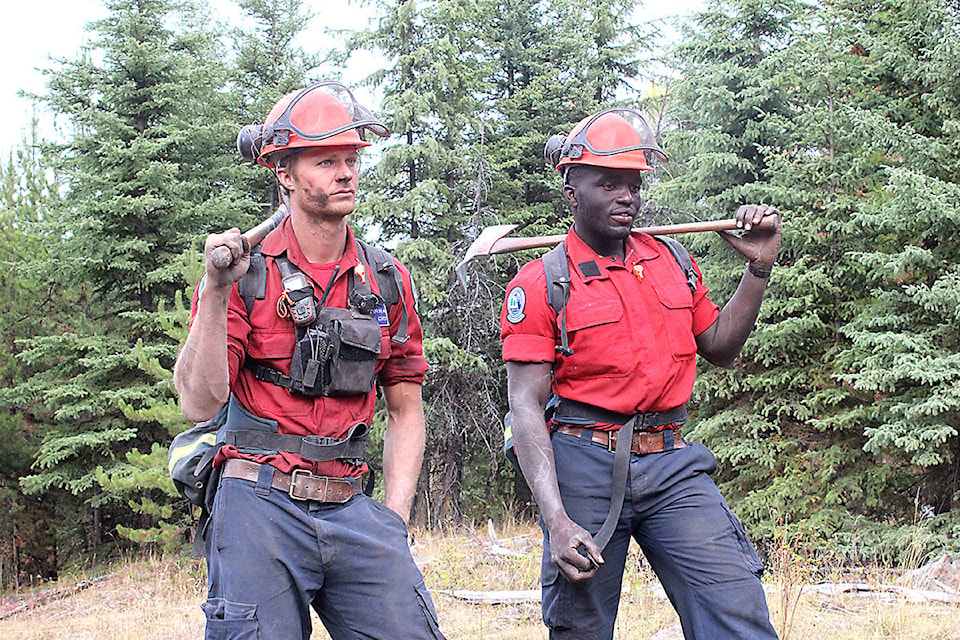With the Elephant Hill fire at 100 per cent containment and that ever-desired “under control” status as of Sept. 27, there are still firefighters on the lines working to do the final cleanup on the fire.
The 100 Mile Free Press joined a tour to the front of the fire lines with other local media to see what firefighters are working on in what is hopefully the ending stages of the fire.
Nathan Thomas is a rookie firefighter with the Princeton Sierras unit crew. The crews are normally staffed at 20 people, although since the end of summer the group has been working with only nine.
The crew is on their sixth deployment of the year, having started on the fire near Princeton working 26 hour shifts to keep it from entering the town.
They’re now on their second deployment to the Elephant Hill fire, and are in the black every day cleaning up after the fire.
“We start off with a map that has been scanned by a drone or helicopter and we have certain spots on the map that we have to go about hitting and get to the spot,” says Thomas.
Once there, depending on if they have water or not, crew members can either use water to douse the heat or “dry mop” it.
“Dry mopping is we take the hot stuff and put it with the cold dirt, using things like digging [with] your hand tool and make sure it’s out.”
The crews are given an objective, they’re asked to put out hot spots within a certain distance from the fire perimeter. On Sept. 22, that objective was 100 feet.
“Whatever they ask for, you just try to smash it and get it done,” says Thomas.
The crews were noticeably covered in dirt from their work.
“What you want to do is you want to prevent it from spreading,” says Thomas, picking up an axe with a flattened shovel on one side, known as a Pulaski.
“Say you have a log that is down on the ground and you want to cut it you use it as an axe and then what you do is you just dig down around where the hot spot is you just get down to the mineral soil and try to prevent that fire from spreading any further and then you try to get it out with cold dirt,” he says.
Depending on whether the hot spot is on fire or simply smouldering, Thomas says it can take anywhere from a couple hours to an entire day to put out one spot.
“Can’t really put a thumb on it. You just got to put it out and make sure it doesn’t spread,” he says.
While Thomas says they are well equipped and well trained to stay safe, they do travel in groups while in the woods.
Otherwise, in the experience he’s gained alone, he says it was a good season to work as a rookie.
“I’m surrounded by some really experienced guys with seven to ten years under their belt. In that environment it’s just massive for someone in their first year, so we’re just trying to do our best for the community.”
@Tspricker
tara.sprickerhoff@100milefreepress.net
Like us on Facebook and follow us on Twitter.
